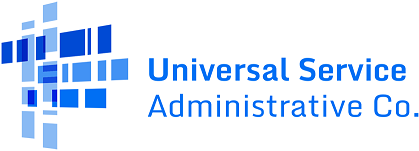Common Findings: High Cost Program
About These Findings
- The majority of the audit findings discussed below apply to rate of return carriers, specifically cost companies receiving High Cost Loop (HCL) and Connect America Fund Broadband Line Support (CAF BLS).
- These findings (except for the document retention and cut-off period findings) do not apply to:
- Rate of return average schedule companies, as their HCL support is determined based on a formula rather than their individual costs
- Competitive eligible telecommunications carriers, who largely receive frozen support
- Carriers that receive Connect America Fund support based on the offer of model-based support, or through a competitive bidding process
Visit the High Cost Learn and Resources pages for upcoming training events, reference materials, webinars, and online tutorials to learn more about how to succeed in the program.
Audit Findings
This finding is reflective of either a) Inaccurate SLC Revenue or b) Improper Part 36 Reporting.
Relevant FCC Rules
- 2007 Comprehensive Review Order (FCC 07-150)
- USF/ICC Transformation Order (FCC 11-161)
- 47 CFR § 54.320(b)
- 47 CFR § 32.12
- 47 CFR § 54.903(a)(1)
Description of Finding
This finding occurs when carriers fail to provide the required documentation or submit inaccurate data to support the forms used in the High Cost program. Inaccurate or missing data can result in discrepancies that may affect the carrier’s eligibility or support amount. Carriers must ensure that all documentation is complete, accurate, and retained for the required duration.
Relevant FCC Rules
- 47 CFR § 64.901
- Public Notice FCC 15-133
Description of Finding
This finding occurs when regulated and non-regulated activities are not correctly separated, leading to misallocation of costs. Carriers must follow the appropriate rules and guidance to ensure that expenses are accurately classified.
Relevant FCC Rules
- 47 CFR § 32.2000(g)(2)(iii)
- 47 CFR § 32.2000(g)(2)(iii)
- 47 CFR § 32.2000(h)(1) and (h)(3)
Description of Finding
This finding arises when depreciation calculations are inaccurate, either due to incorrect asset balances or improper depreciation rates. Inaccurate depreciation leads to miscalculations in High Cost program support and can result in significant discrepancies. Carriers must calculate depreciation and amortization expenses using the mass asset depreciation method on their average monthly balances, recorded accurately and in the correct accounting periods.
Relevant FCC Rules
- 47 CFR § 54.7
- Public Notice FCC 15-133
- FCC 18-29 (March 2018)
Description of Finding
This finding occurs when a carrier uses High Cost program funds for ineligible expenses, such as personal expenses, luxury items, or other costs not necessary for eligible services. Misuse of USF funds not only violates FCC rules but can also result in the carrier being required to repay funds and face other penalties. Carriers must ensure that USF funds are allocated only for appropriate and eligible High Cost program purposes.
Relevant FCC Rules
- 47 CFR § 32.2 and Part 32
- 47 CFR § 54.903
Description of Finding
This finding occurs when assets, expenses, or liabilities are incorrectly classified in the carrier’s financial records. Incorrect classifications can affect the accuracy of High Cost program reporting and support calculations. Carriers must properly assess and report classifications, including subscriber line counts for CAF BLS reporting.
Who does this finding apply to?
- 47 CFR § 54.1305(i)
- 47 CFR § 54.1305(j)
Description of Finding
This finding occurs when loop documentation provided does not support the loops reported on the HCL Data Collection Form. Carriers must provide documentation that properly supports the number of loops reported on the HCL Data Collection Form.
